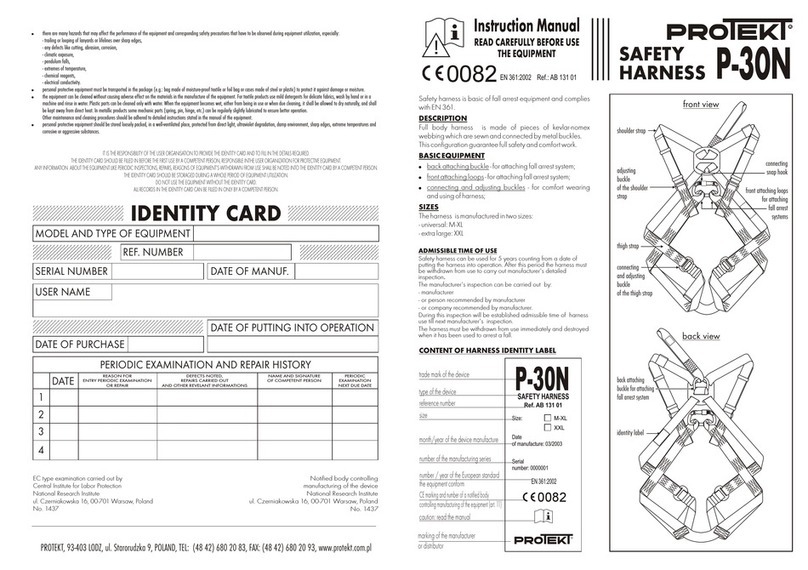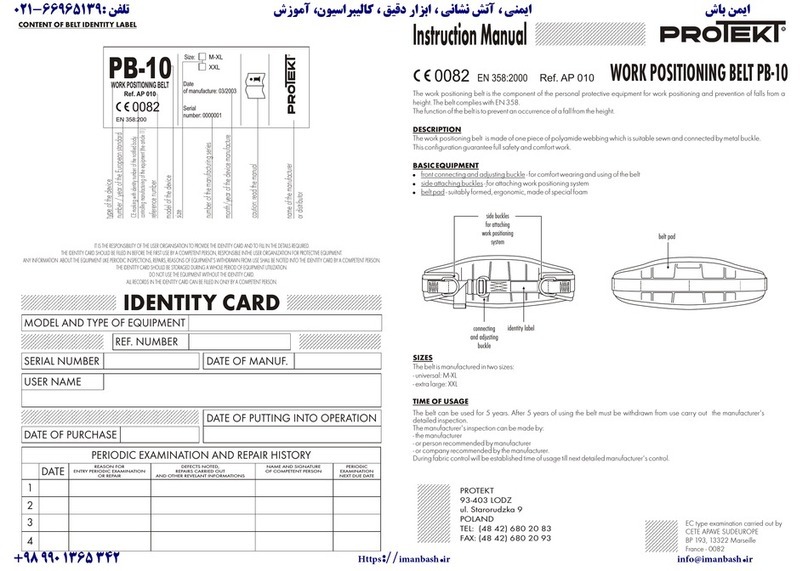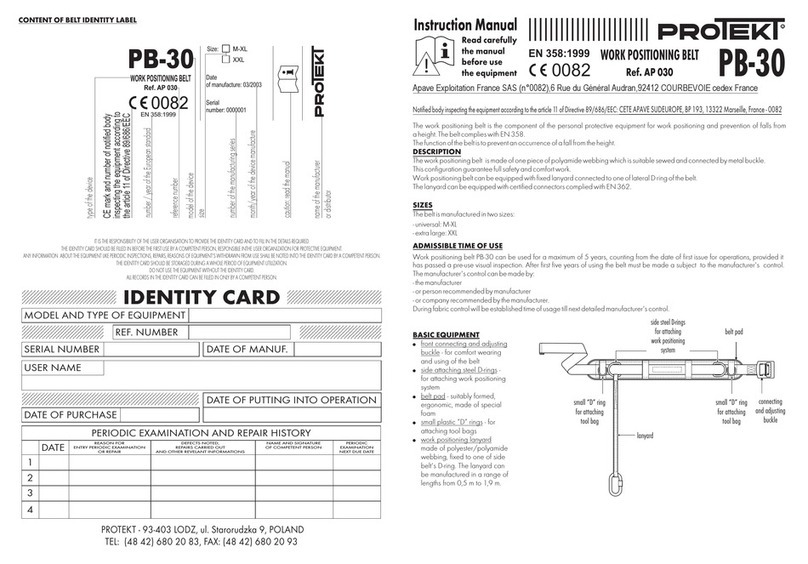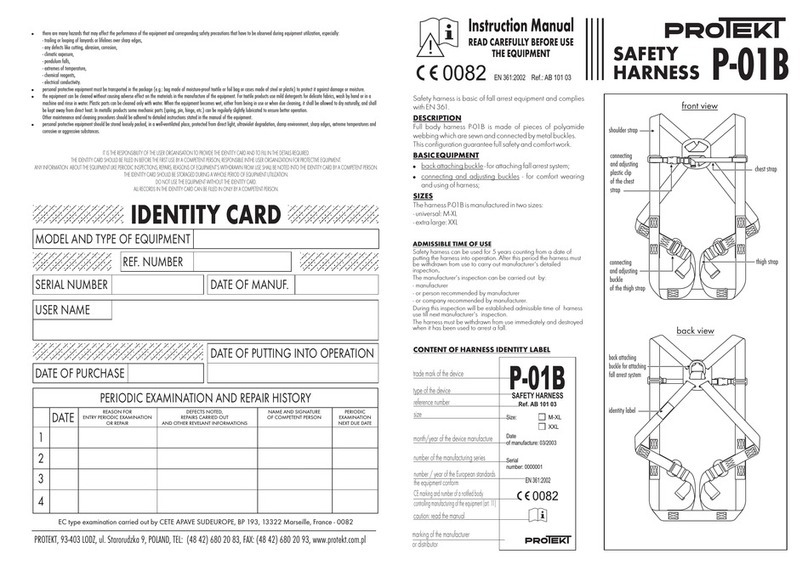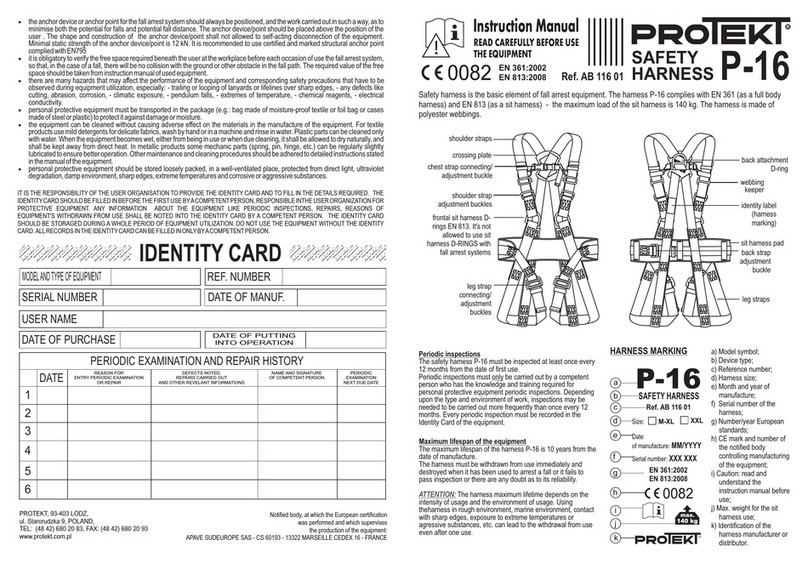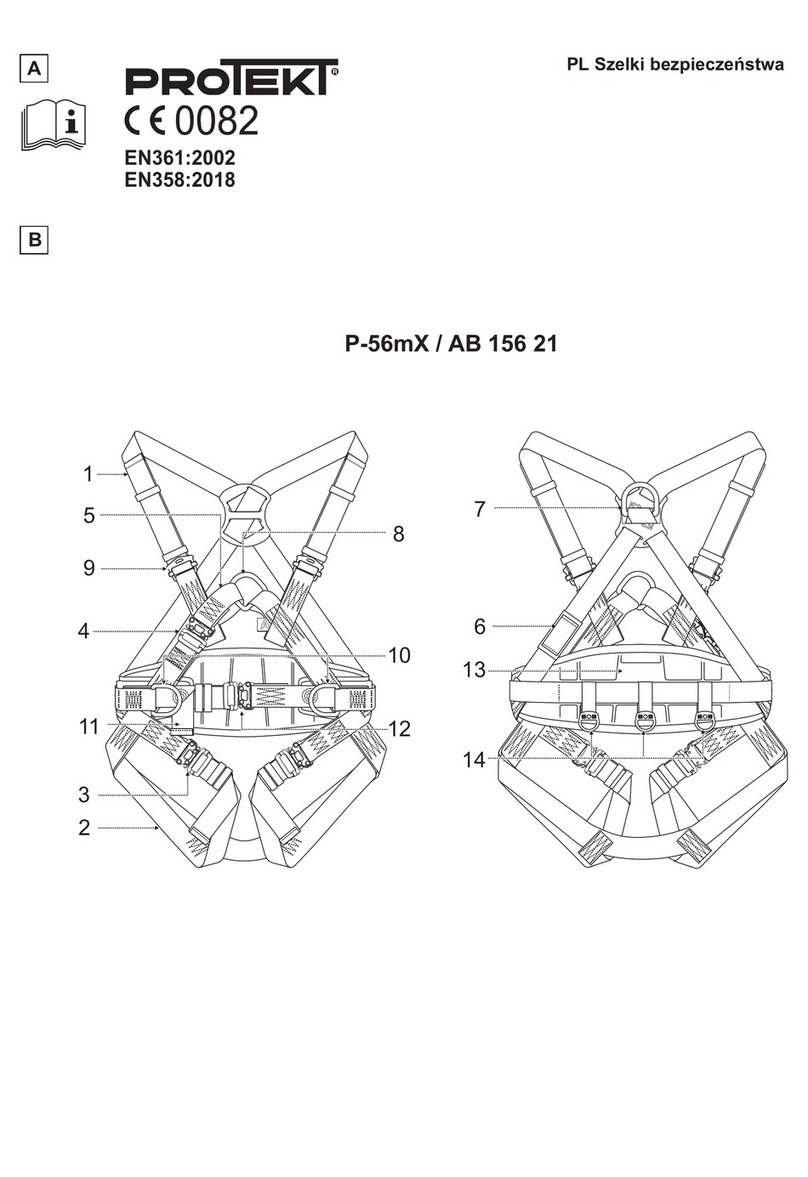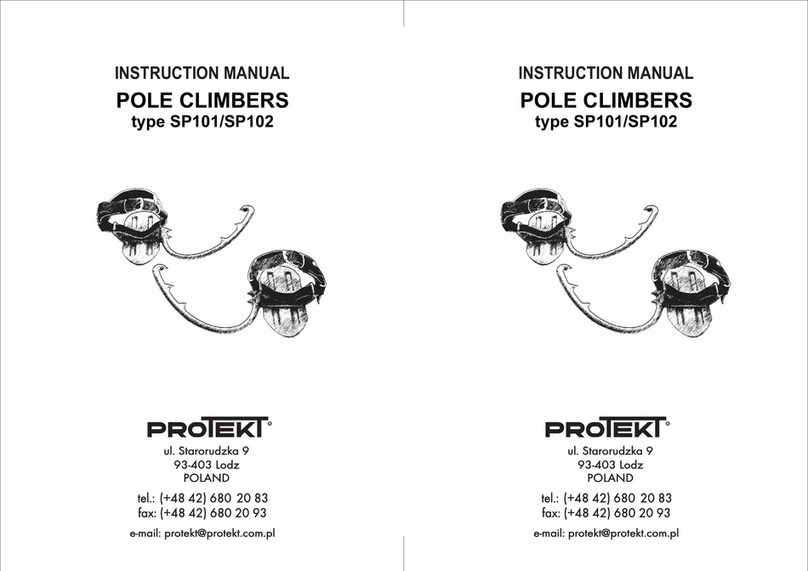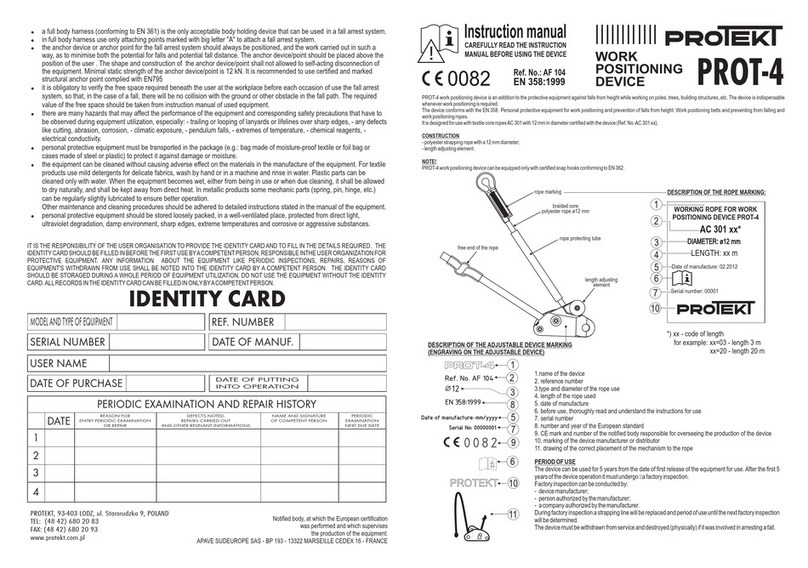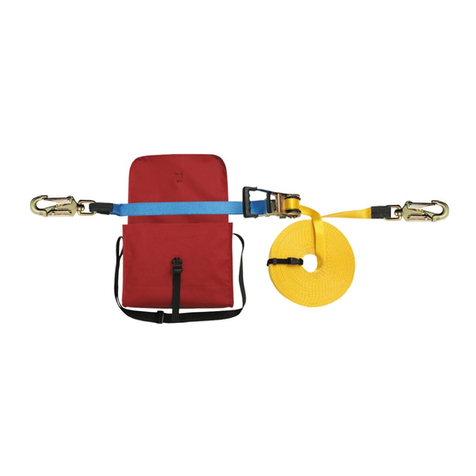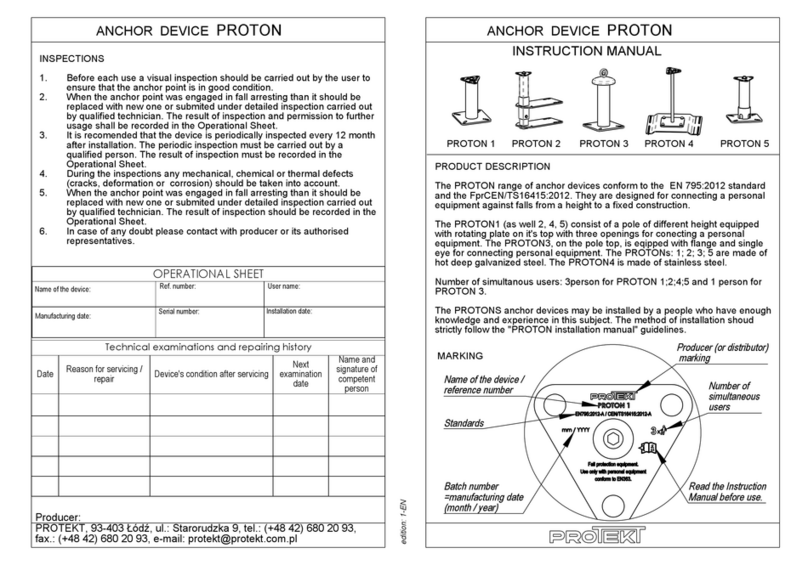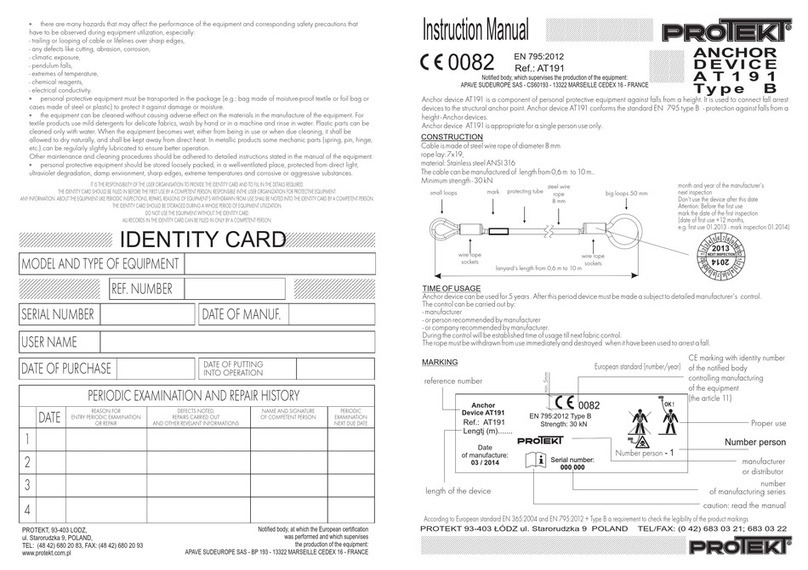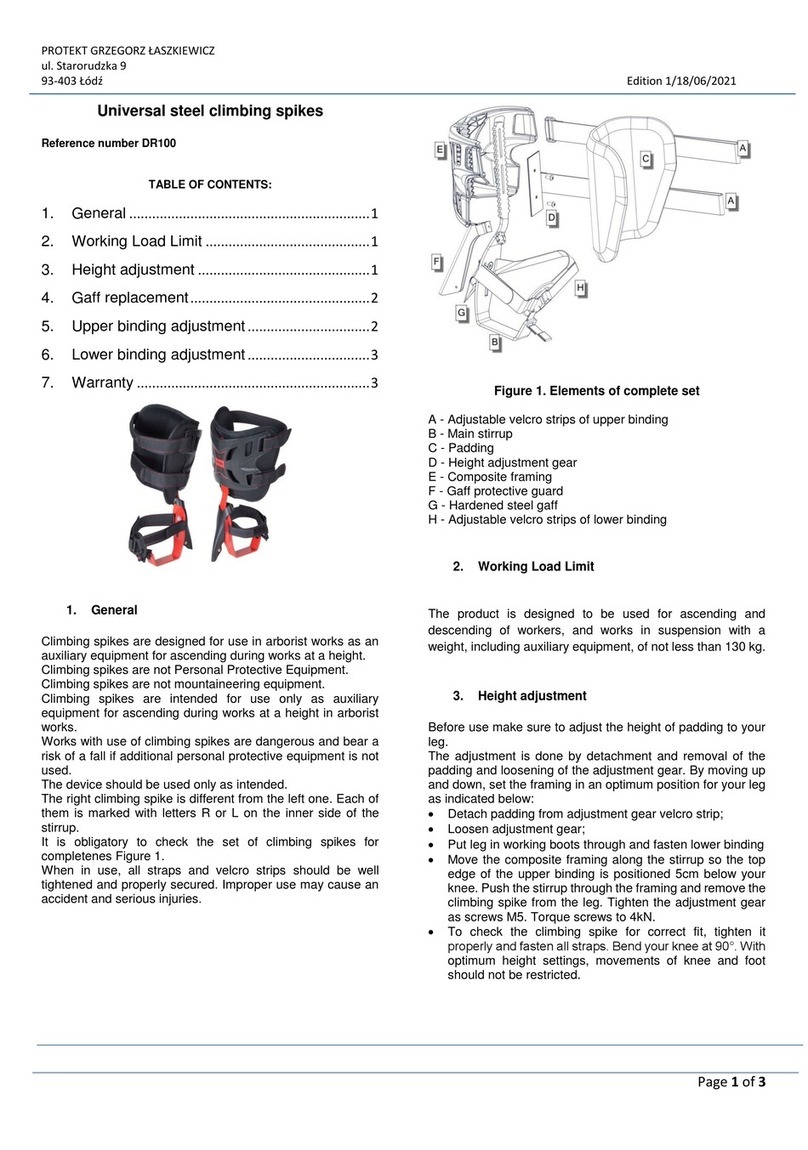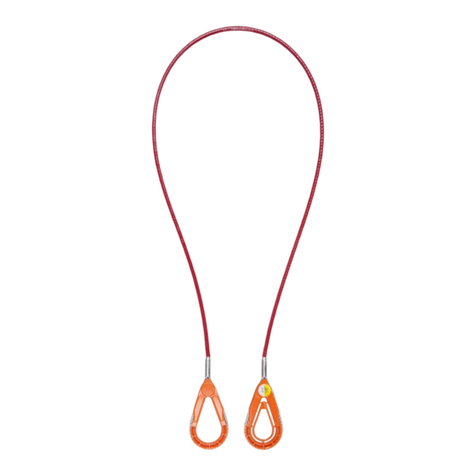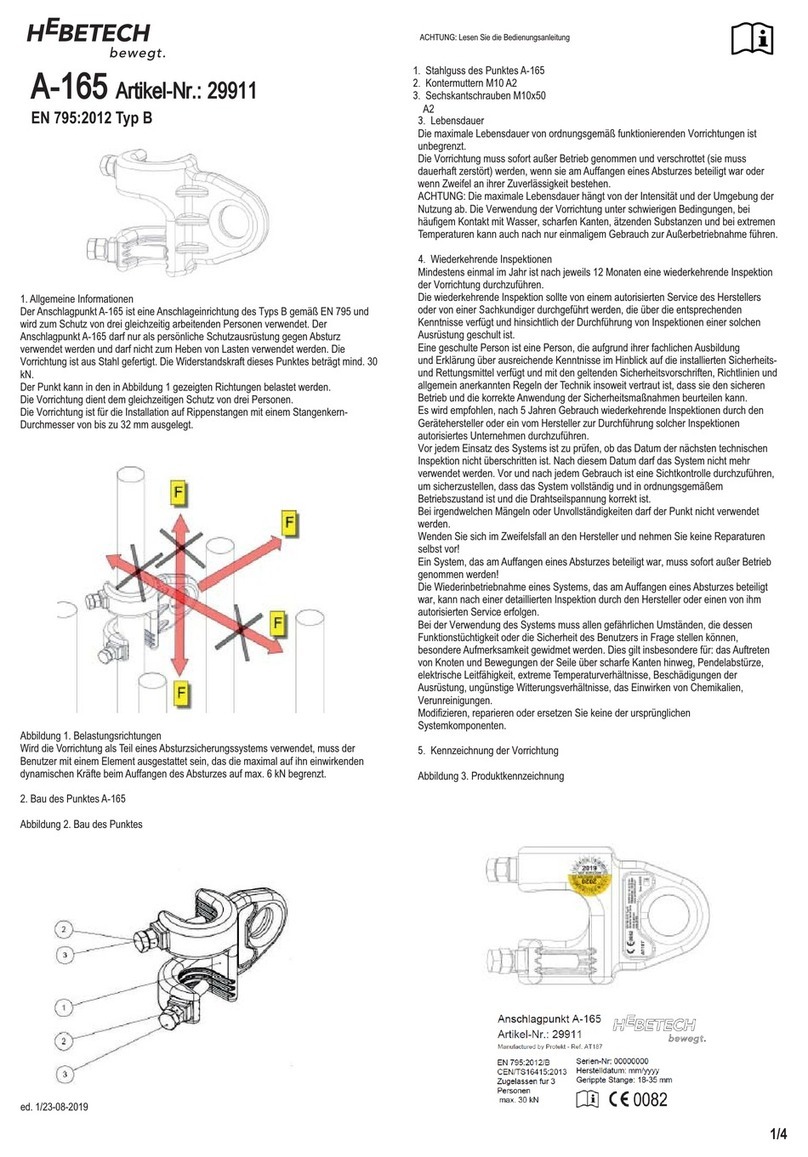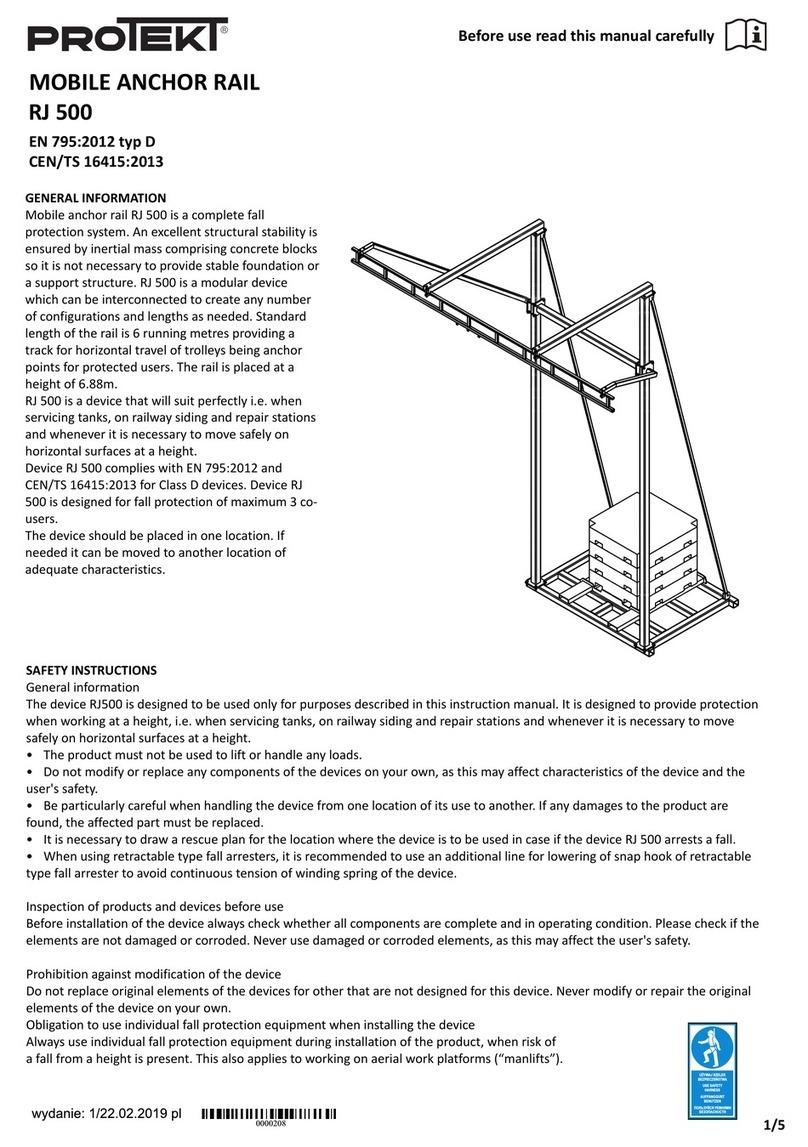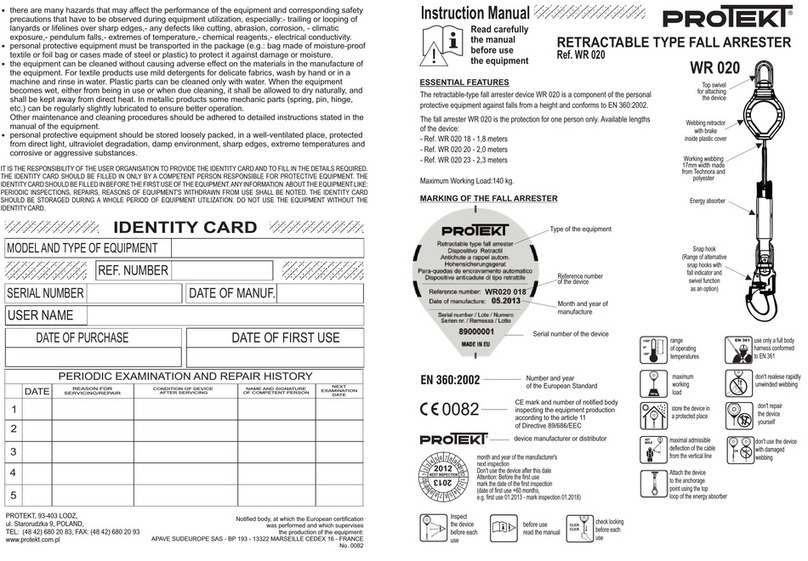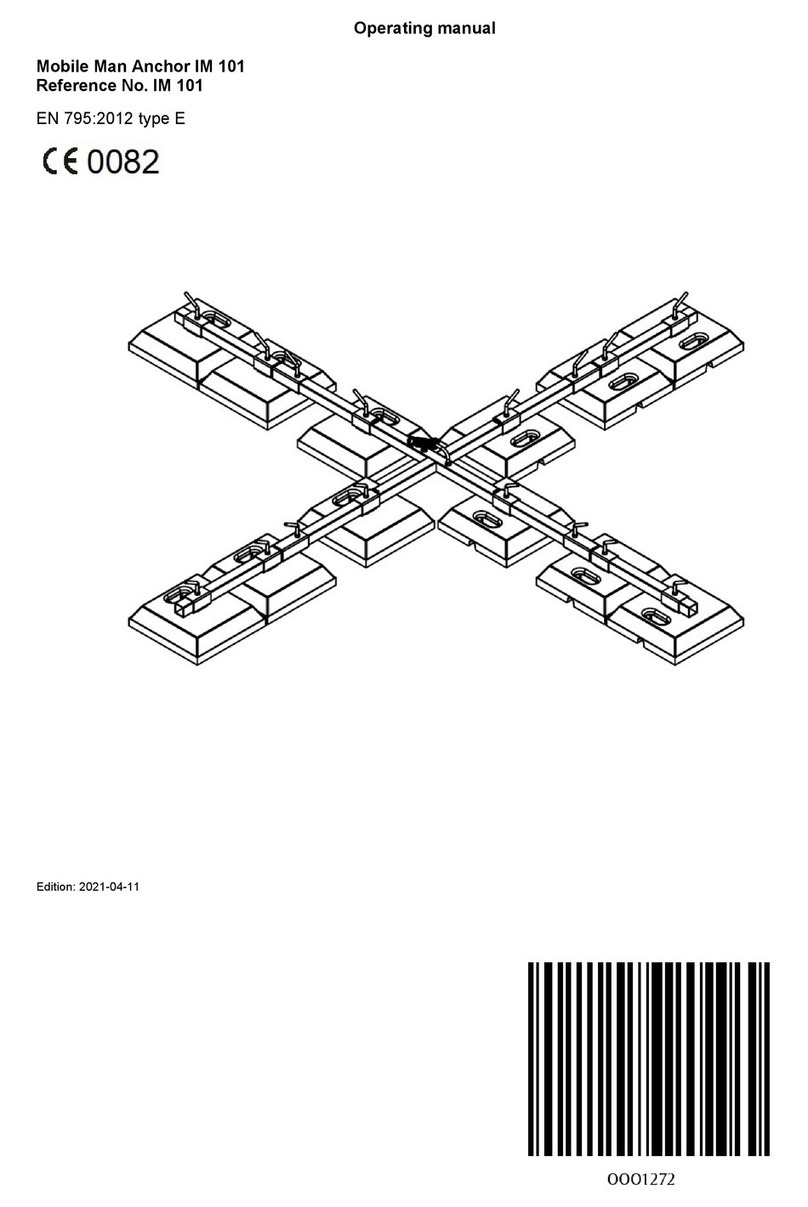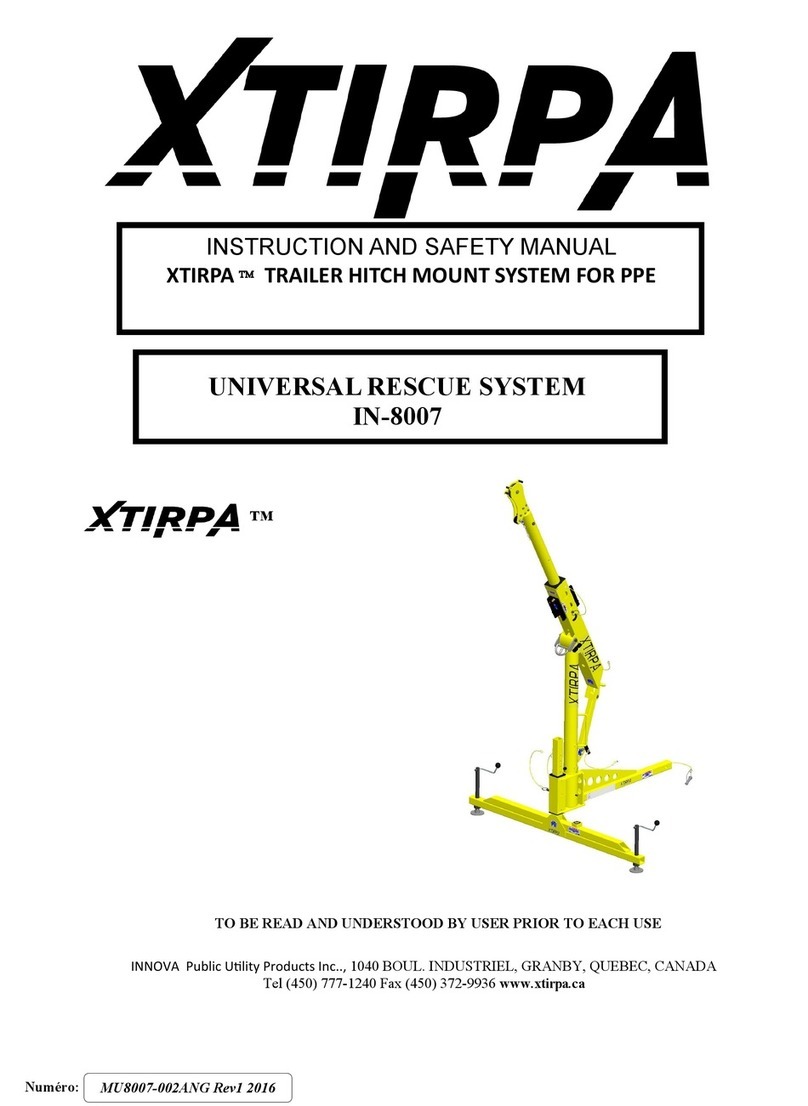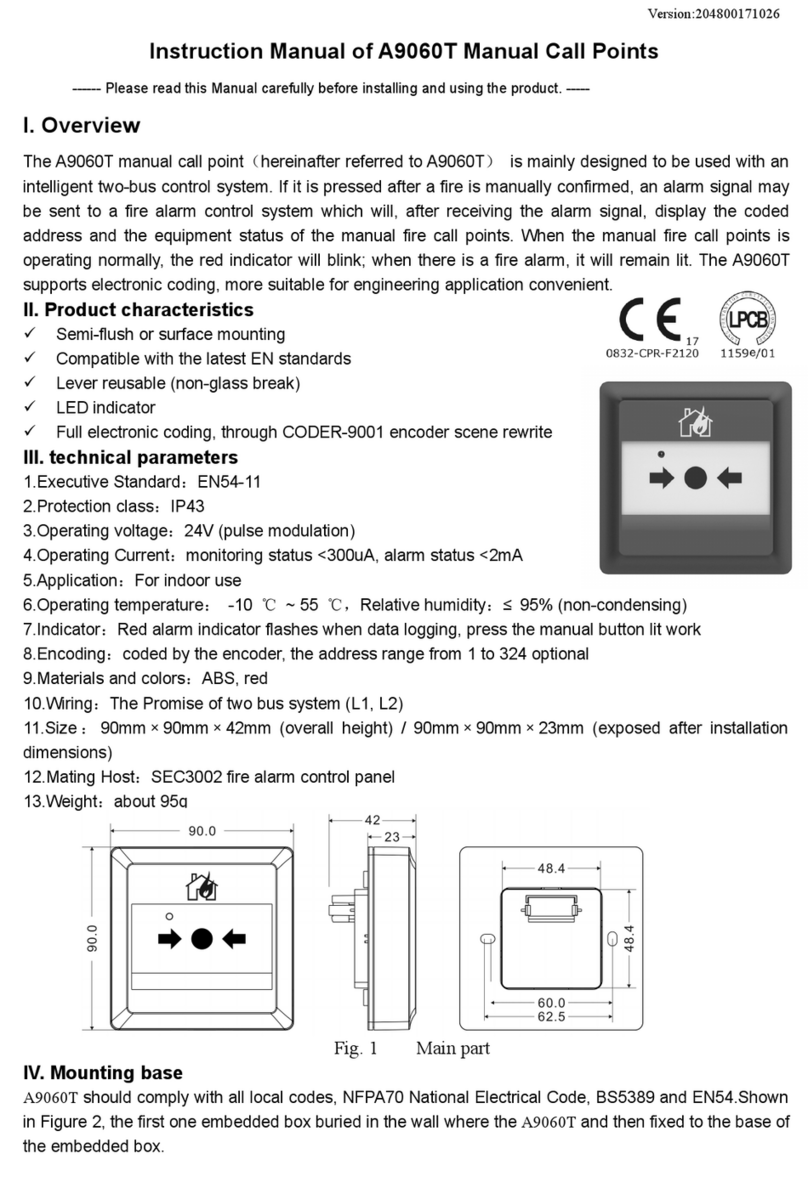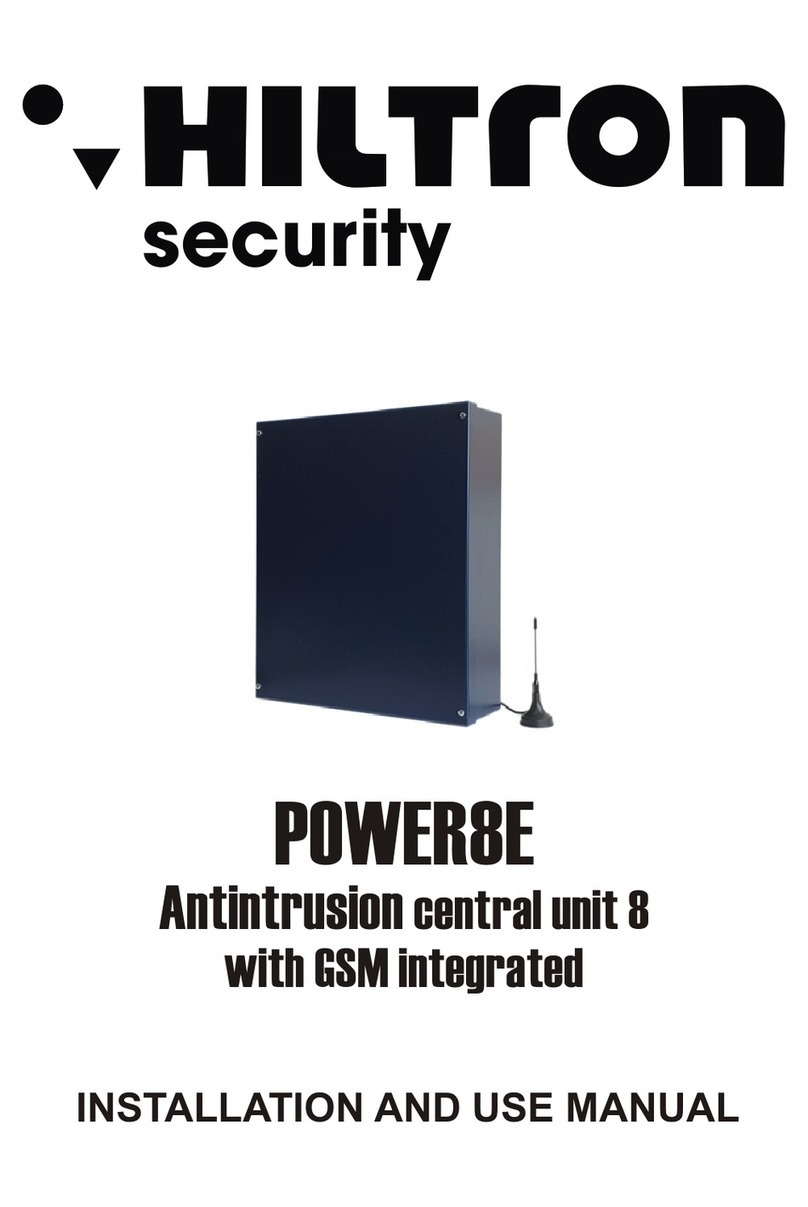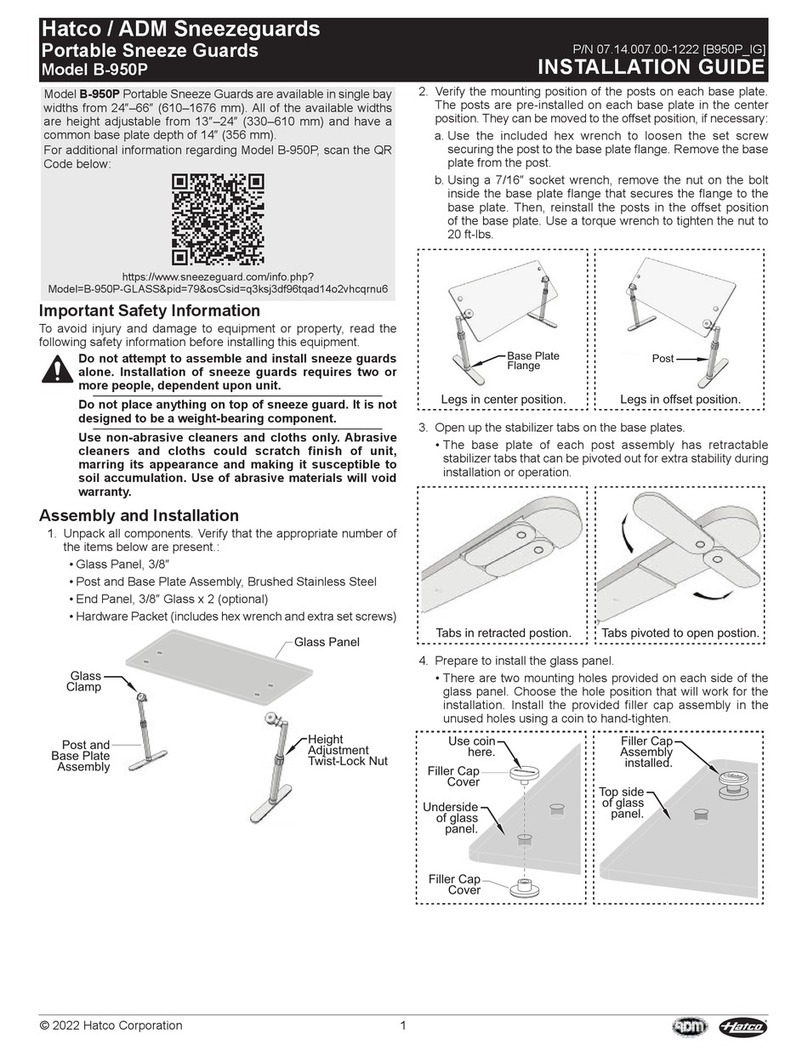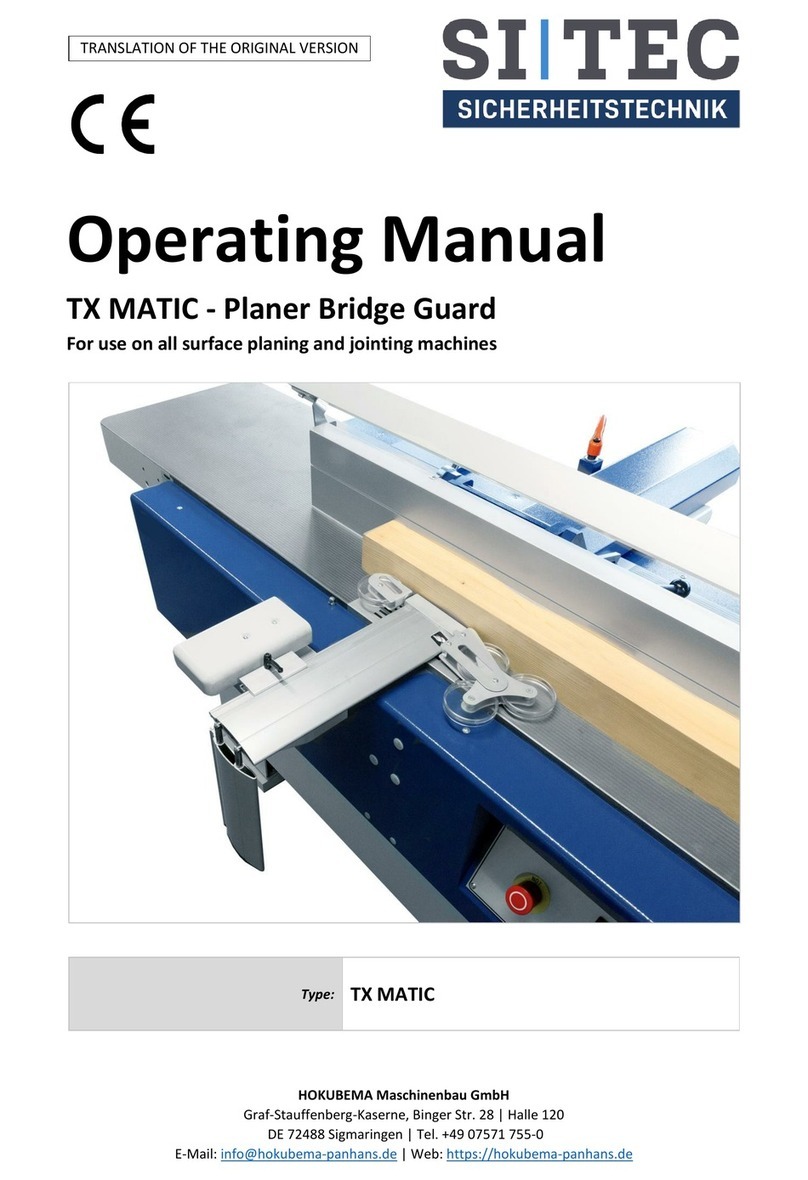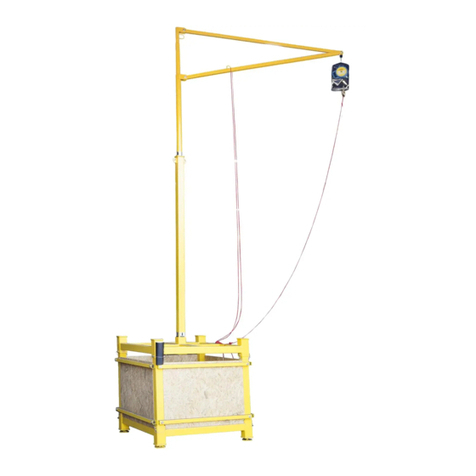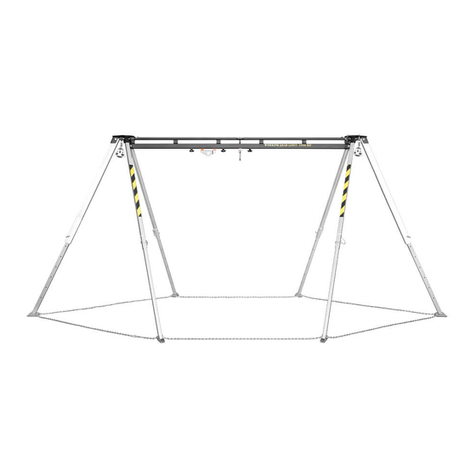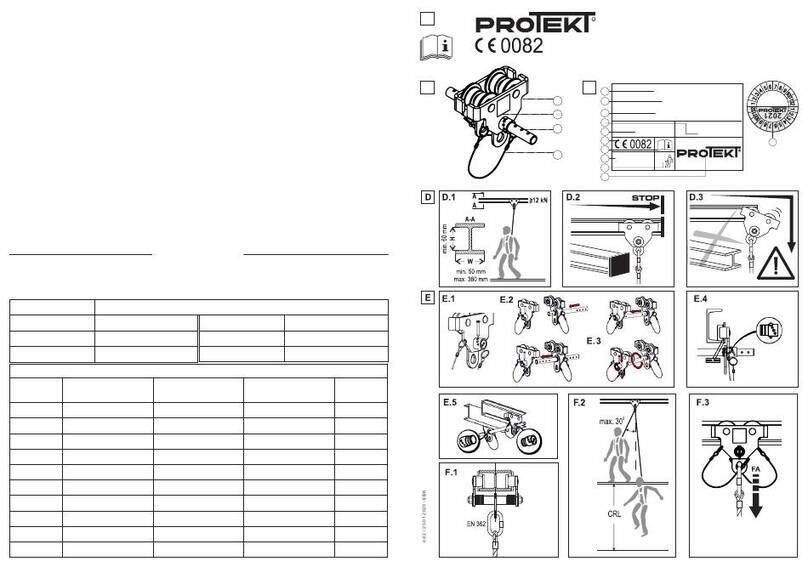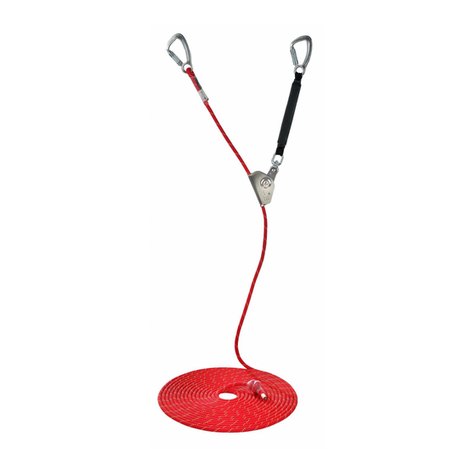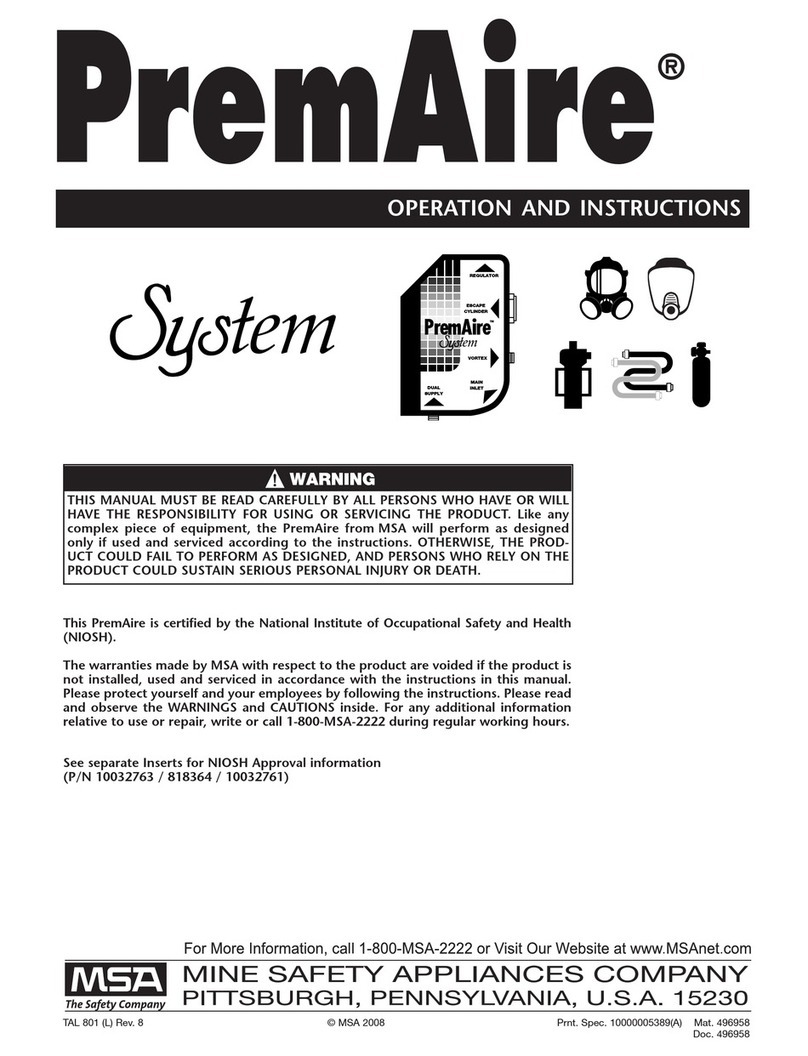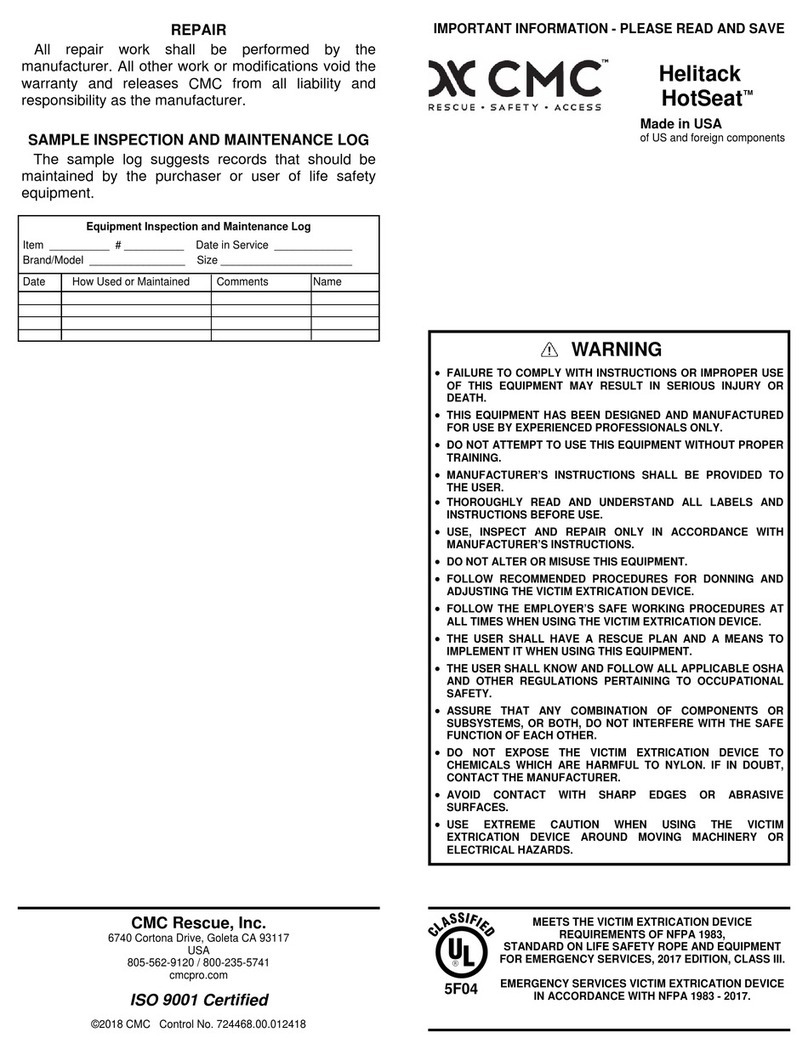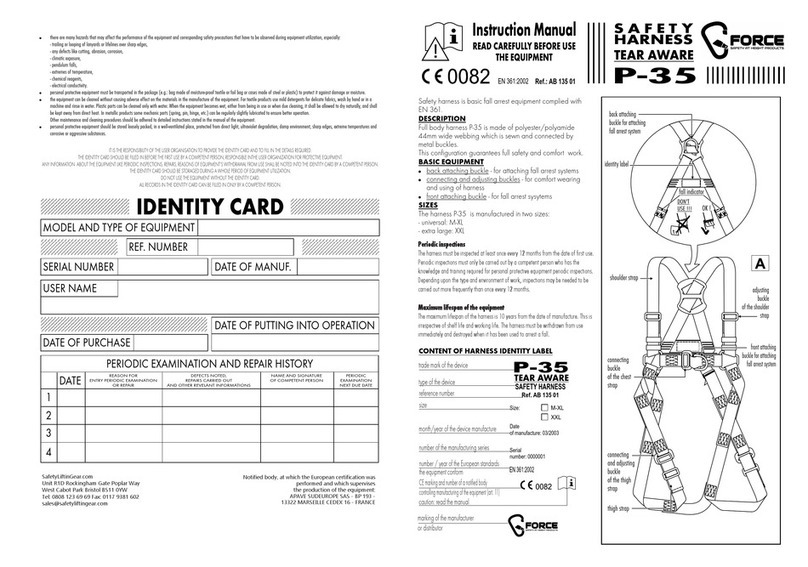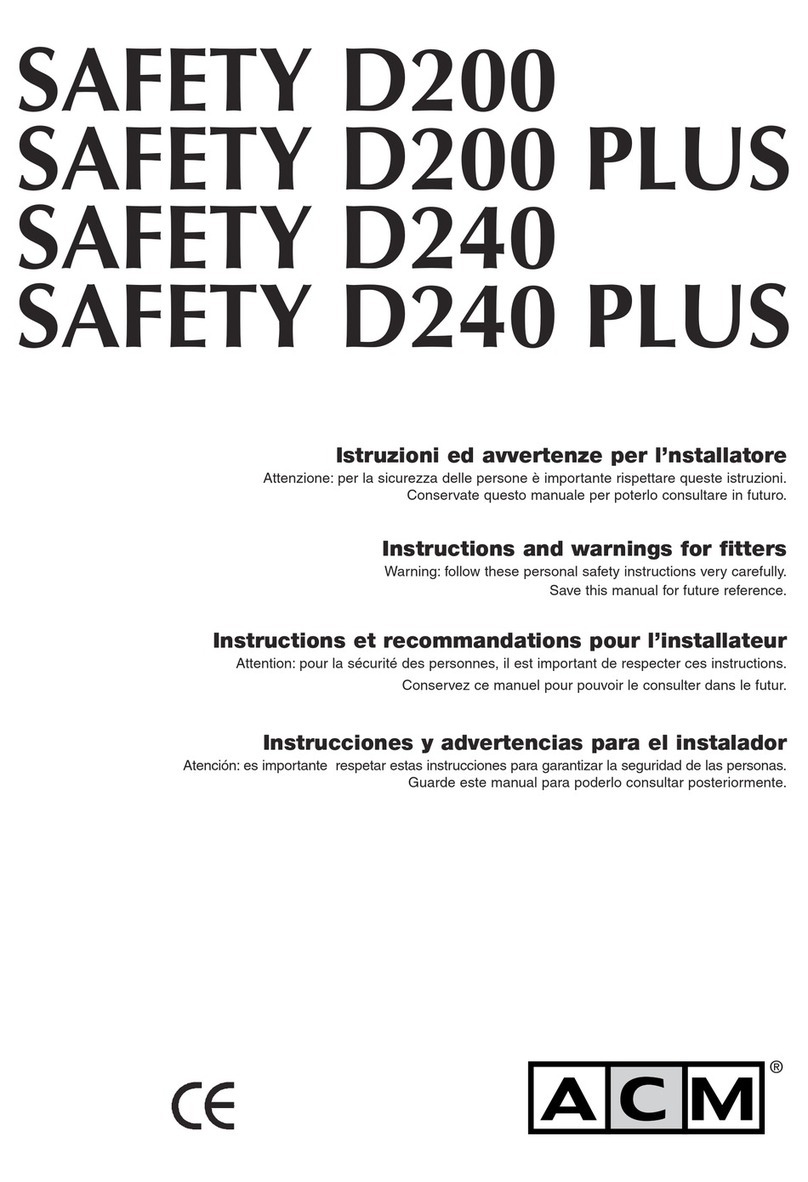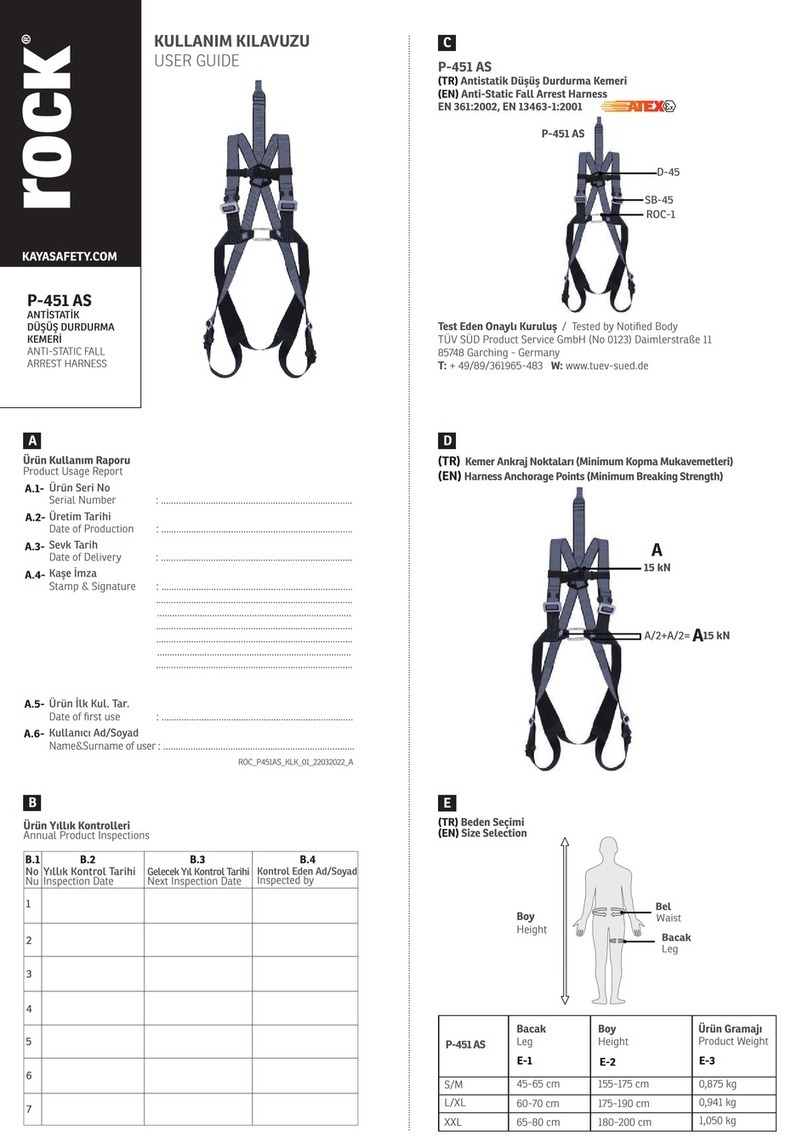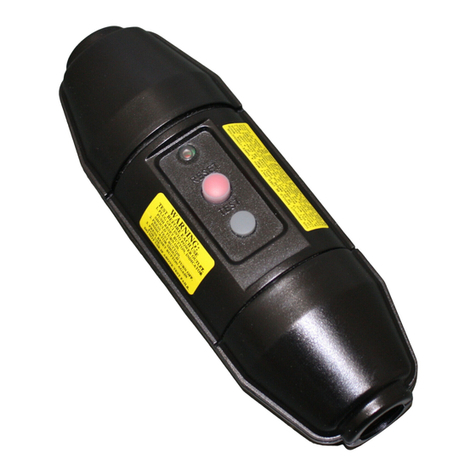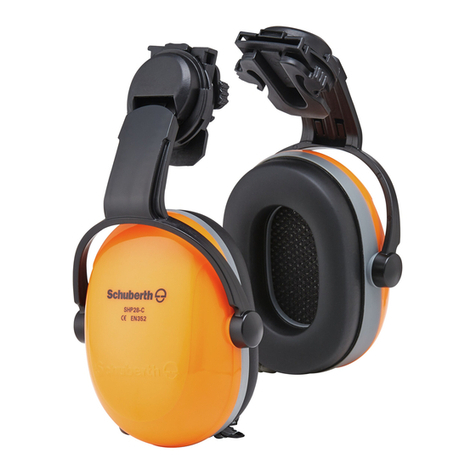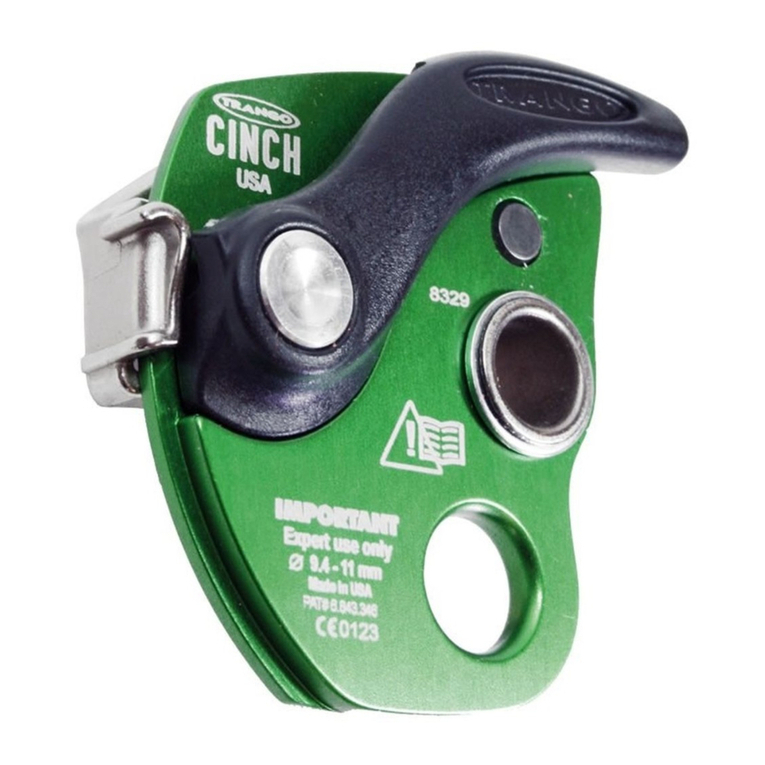
!disconnection.
!· It is forbidden to use a combination of equipment where function of any one item is affected
by, or interferes with the function of any other.
!· before each use of personal fall protection equipment carry out a detailed inspection to
ensure that the device is operable and operates correctly.
!· In particular, before use inspect all accessible elements of the equipment for any damages,
excessive wear, corrosion, abrasion, cutting or improper function. On individual devices pay
particular attention to:
!· in full body harness, sit harnesses and work positioning devices: buckles, regulating
elements, attachment points (buckles), webbing, seams, belt loops;
!· in energy absorbers: attachment loops, webbing, seams, housing, connectors;
!· in lanyards and textile guides: rope, loops, thimbles, connectors, regulating parts, splices;
!· in lanyards and steel guides: rope, wires, clamps, loops, thimbles, connectors, regulating
parts;
!· in retractable type fall arresters: lanyard or webbing, retractor and locking mechanism for
proper operation, housing, energy absorber, connectors;
!· in guided type fall arresters: body, proper guiding, locking mechanism for proper operation,
rollers, bolts and rivets, connectors, energy absorber; in metal parts (connectors, hooks,
attachment points): load-bearing body, rivets, main pawl, function of locking gear.
!· at least once a year, after every12 months of use, personal protective equipment must be
withdrawn from use to carry out periodic detailed inspection. Periodic inspection may be
carried out by a properly qualified and skilled person. Also periodic inspection may be carried
by manufacturer of the equipment or his authorized representative.
!· in some cases, if the fall protection equipment has a complex design (e.g. fall arresters),
periodic inspections may be carried out by the equipment manufacturer, or his authorized
representative only. After the periodic inspection, date of the next inspection should be
arranged.
!· Regular periodic inspections are essential in respect of the equipment condition and safety
of users which is dependant on the equipment functionality and durability.
!· During periodic inspection it is necessary to check the legibility of all the equipment
markings (identity label of the device.) Do not use the equipment if marking is illegible.
!· it is essential for the user's safety that the product is re-sold outside the original country of
destination the reseller must provide instructions for use, for maintenance, for periodic
inspection and for repair in language of the country where the product is to be used.
!· personal fall protection equipment must be withdrawn from use and discarded immediately
(or other procedures based on instruction manual should be applied) if it has been used to
arrest a fall.
!· full body harness compliant with EN 361 is the only device supporting user's body in fall
arrest systems.
!· fall arrest system can be connected to attachment points (buckles, loops) on full body
harness marked with capital letter “A”
!· Anchor point (device) of the fall protection equipment should have a stable structure and
position so as to prevent a possibility of the load fall and minimize a free fall distance. Anchor
point of the equipment should be located above the user's work station. The shape and
construction of the anchor device/point shall not allow for a self-acting disconnection of the
equipment. Minimal strength of the equipment anchor point should be 12kN. It is
recommended to use certified and marked anchor points of the equipment compliant with EN
795.
!· It is obligatory to verify the free space required under the user at workplace before each
occasion of using the fall protection system, so that, in case of a fall, there is no collision with
the ground or other obstacle in the fall path. The required free space should be determined
on basis of the data given in the instruction manual of the equipment to be used.
!· when using the equipment, pay special attention to risks affecting operation of the
equipment and the user's safety, and in particular to kinks and rope movement on sharp
edges, oscillatory falls, electrical conductivity, any damages such as cuts, abrasions,
corrosion, influence of extreme temperatures, negative influence of environmental factors,
chemical substances.
!· Personal protective equipment must be transported in a package (e.g.: bag made of
moisture-proof textile or foil bag or cases made of steel or plastic) to protect it against
damage or moisture.
!· Personal fall protection equipment should be cleaned without causing adverse effect on
the materials used in the production of the equipment. For textile materials (webbings, ropes)
use agents suitable for delicate fabrics. Rinse thoroughly. Clean energy absorbers using
damp cloth only. Do not immerse energy absorber in water. Wash textile products with water
only. When the equipment becomes wet, either from being in use or after cleaning, allow it to
dry naturally, and keep it away from sources of heat. In metallic products lubricate slightly
some mechanical parts (springs, hinges, pawls, etc.) regularly to ensure their better
operation.
!· Personal protective equipment should be stored loosely packed in well-ventilated rooms,
protected from direct light, UV degradation, dust, sharp edges, extreme temperatures and
aggressive chemical substances.
!· all parts of a fall protection equipment must conform to instruction manuals for the
equipment and standards in force:
!- EN 353-1, EN 353-2, EN 354, EN 355, EN 360 - Fall arrest systems;
!- EN 362 - Connectors
!- EN341, EN1496, EN1497, EN1498 - Rescue equipment
!- EN 361 - Full body harness;
!- EN 813 - Sit harness;
!- EN 358 - Work positioning systems;
!- EN 795 - Anchor devices.
IDENTITY CARD
TECHNICAL INSPECTIONS
1
SIGNATURE OF
AUTHORIZED
PERSON
DEVICE NUMBER
USER NAME
REFERENCE NO.
DATE OF MANUFACTURE
DATE OF FIRST USE
DATE OF PURCHASE
2
3
4
5
DATE OF NEXT INSPECTIONDATE
OF INSPECTION
REASONS FOR
INSPECTION OR REPAIR
NOTICED DAMAGES,
COMPLETED REPAIRS, OTHER REMARKS
NAME OF DEVICE
MODEL
It is the responsibility of the user organisation to provide the Identity Card and to fill in the required details. The Identity Card should be filled in before the first usage of the equipment. All
information on fall protection equipment (name, serial no., purchase date and date of first use, name of user, information on repairs and inspections and withdrawal from use) must be provided
in the identity card of the device. The Identity Card should be filled in by a person responsible for fall protection equipment in an organisation. It is forbidden to use personal fall protection
equipment if the Identity Card is not filled in.
PROTEKT ul. Starorudzka 9, 93-403 Łódź , POLAND
Tel. + 48 42 6802083, Fax +48 42 6802093
European Certificate issued by
CENTRAL INSTITUTE FOR LABOUR PROTECTION
ul. Czerniakowska 16, 00-701 Warsaw, Poland, no. 1437
4/4
Declaration of Conformity EU for this product is delivered with the product.
If needed it is also available at the manufacturer's website: www.protekt.com.pl.
